Administer the following:
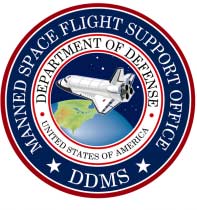
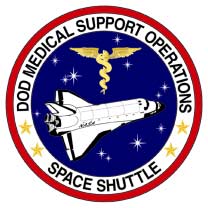
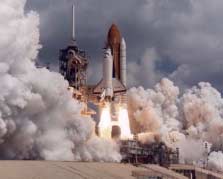
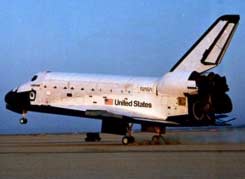
DEPARTMENT OF DEFENSE
MANNED SPACE FLIGHT SUPPORT OFFICE
SPACE SHUTTLE MEDICAL PERSONNEL GUIDE
This guide is intended only as a field reference for DOD physicians, emergency
medical technicians (EMT's) and pararescue personnel who provide contingency
medical support to Space Shuttle operations throughout the world. It is not
intended to replace the Department of Defense Manager's Space Shuttle
Contingency Functional Plan, nor other definitive NASA or DDMS documents.
Information in this booklet is accurate at the time of publication.
The material in this booklet complements materials taught either by the DDMS
staff, or at the NASA/DOD Space Operations Medical Support Training Course. If
you have questions or comments please contact DDMS-M.
DDMS-M
1201 Edward H. White II Street, MS 7101
Patrick AFB, FL 32925
DSN 854-5981
Commercial (321) 494-5981
FAX ext. 7425
DDMS SPACE SHUTTLE MEDICAL PERSONNEL GUIDE
TABLE OF CONTENTS
TRANSOCEANIC ABORT LANDING (TAL) SITES
LANDSTUHL REGIONAL MEDICAL CENTER
DDMS Representative 86 AMDS/SGPF
WRM Warehouse (Vidmar storage)
La MAZ Hospital, Zaragoza
011-34-976-516-000Ext.: 300 or 500
Miguel Servet Hospital, Zaragoza
Spanish Military Hospital, Zaragoza (Chamber)
Naval Hospital Rota
Virgen Del Rocio University Hospital, Seville
011-34-954-24-8192 -8181
DDMS, Patrick AFB, FL
FAXSUPPORT OPERATIONS CENTER
(SOC) open 24 hours during mission
CONUS SITES TELEPHONE LIST
DDMS, PATRICK AB, FL
DDMS-M (Medical)
SUPPORT OPERATIONS CENTER
(SOC) open 24 hours during mission
NASA APPROVED MEDICAL FACILITIES
KENNEDY SPACE CENTER REGION, FL
Intermediate Medical Care Facility (IMCF)
Parrish Medical Center, Titusville, FL
(321) 268-6130/1/2
Definitive Medical Care Facility (DMCF)Florida, Hospital, Orlando, FL
Halifax Medical Center, Daytona, FL
Holmes Regional Medical Center, Melbourne, FL
Orlando Regional Medical Center, Orlando, FL
Shands Hospital, Gainesville, FL
DRYDEN FLIGHT RESEARCH CENTER/EDWARDS AFB, CA
NASA Dryden's Gold Room
Edwards AFB Clinic, CA
IMCFAntelope Valley Hospital, Lancaster, CA
DMCFLoma Linda Medical Center, Loma Linda, CA
UCLA Medical Center, Los Angeles, CA
WHITE SANDS SPACE HARBOR, NM
Holloman AFB Clinic, NM
DMCFWm. Beaumont Army Med. Center, TX
T+ 1 HR 47 MIN
RETURN TO
LAUNCH SITE
A BO RT SUM M A RY
(SINGLE ENGINE FAILU RE)
M AIN ENG INE BUR N
LAU NCH AB ORT ELS
TAL O PPO R TUN ITY
A BO R T TO ORB IT
ABO R T O NC E AR O UN D
K E FL A V IK
FAIR FORD
ZARA GO ZA
C HERRY P O INT
M Y R TLE B EACH
B EN G UERIR
Edw ards AFB
W hite Sands
Space Harbor
Space Center
EM ER G ENCY LA N D IN G
SITES - DO D
E lm end orf A FB
M tn . H om e
Ellsw orth
Yokota A B
W hite Sands
H ickam
A FB
A ndersen A FB
A scension
EM ER G ENCY LA N D IN G
SITES - ALL
Elm en dorf AFB
M tn . H om e
Ko ln /Bonn
Ells w orth
Yo kota A B
Es enb oga
M oronBen Guerir Riyadh
W h ite San dD
Las Pa lm as
Hickam A FB
Tam an ras sett
An ders en A FB
Am ilca r Ro berts
Kins has a
Ascensio n
Ho edsp ruit
Am be rley
MEDICAL TEAM
NOTE: All items should be discussed in a OPEN FORUM setting. Differences of opinion or
understanding should be resolved PRIOR to mission support. Use this SAME outline for a post-
mission or exercise DEBRIEF.
1. Overall Medical CONOPS--the Approach to Astronaut Patients:
a. Equal and intensive medical care for each astronaut
(1) NOT a traditional triage.
(2) At least one DOD medical escort per astronaut.
(a) Remain with patient until relieved by NASA or DOD Surgeon.
(b) Provide situational report (SITREP) on status to DOD Surgeon in SOC uponarrival and as status changes.
b. Review local policy of MEDCODE 0 disposition.
2. Initial Treatment Site Set-up (if convoy required):
a. Site (with ambulances) positioned near the 1250' line, beyond the Decon area.
b. Consider designating "Initial Treatment Areas".
(1) All Medcode 1 patients in one area, Medcode 2 patients in another area, etc.
(2) Design the layout of the site for expedient processing and preparation for medevac.
3. Review of Local Medical Resources and Treatment Facilities
Discuss the Following:
a. Individual team member medical capabilities (physicians, nurses, PJs, EMTs, MedicalTechnicians).
b. Available medical equipment and supplies (inventory and ops check).
c. Local treatment facilities and concept for use as medevac destinations.
(1) Locations, capabilities.
(2) What types of injuries to send where.
4. Assign Team Member Responsibilities and Discuss Roles of Each Member:
a. On-Scene Medical Commander (OSMC--physician).
b. Primary Treatment Providers (EMTs/PJs).
c. Medical Treatment Supervisors (2nd physician/nurse/PJ team leader).
d. Medical Logistics "Specialists" (med techs).
e. Ambulance Loading Supervisors (med techs).
Ambulance Drivers (confirm pre-mission training and ability to understand and
communicate, preferably in English--i.e. @ Ben Guerir).
g. Manpower and Others.
5. Employment of Medical Forces (CONOPS):
a. Receiving patients through Decon.
(1) Immediately assign one EMT/PJ to each astronaut upon passing through Decon line.
(2) EMT/PJ commences initial assessment and stabilization efforts, and gives report toOSMC.
(3) OSMC confirms initial assessment and assigns Medcode/treatment classification toeach astronaut.
b. Initial Treatment and Preparation for Medevac.
(1) Move to designated areas.
(2) Areas supervised by 2nd physician/nurse and PJ team leader (they assist as needed).
(3) Provide patient status updates to OSMC.
(4) Coordinate patient transport intentions with OSMC prior to moving patients.
c. Medevac/Ground Transportation.
(1) Astronauts assigned to ambulances/aircraft by OSMC.
(2) Medical provider stays with patient.
(3) One physician with each medevac load of "critical" patients.
d. Medical Situation Reports (MED SITREPS).
(1) Include the following information:
(a) Identification (letter code).
(b) Medcode/Patient Status.
(c) Medical Needs and Diagnoses.
(d) Medevac Destination Intentions.
(2) Provide SITREPS upon astronaut arrival, when status changes, before transport, uponarrival at DMCF/IMCF, or as requested.
(3) SITREPS supplied only by OSMC or designee (at triage site) or medical escort (atDMCF/IMCF).
(4) Transmit SITREPS to DOD Surgeon in SOC.
(a) Use direct communication if possible.
(b) Use most practical means - radio, phone (hard line or cellular), patch, etc.
(5) Provide SITREPS to others on need to know basis (on-scene commander, TAL Rep,etc.).
(6) Continue SITREPS at DMCF/IMCF until NASA Crew Surgeon arrives.
6. Management of Medical/Contingency Records:
a. Primary Medical Provider is responsible for maintaining medical records.
b. Document care rendered on SF 600.
c. Document crewmember status on delivery to DMCF/IMCF.
d. All medical records are subject to the Privacy Act of 1974.
e. All medical records except DMCF and IMCF records become the property of JSC FlightMedicine Clinic.
The site EMS coordinator or senior physician will maintain an EMS Operations Log.
g. The EMS Log and all medical records must be maintained in a locked file.
h. Medical records shall contain:
(1) History and physical findings.
(2) Medical diagnosis.
(3) Complete list of treatment, with time and description.
(4) Condition on delivery to DMCF/IMCF.
(5) Signatures of responsible care providers.
7. Review Plan for Site Specific Aircraft Configuration:
a. TAL Sites.
(1) Review plan for downloading RAMZ from C-130.
(2) Discuss plan for C-130 start-up in preparation for Aerovac (i.e., how and when tonotify crew of need, time needed, etc.).
b. KSC, Edwards, WSSH.
(1) Review helicopter configuration for initial mode response.
(2) Review helicopter configuration for Medevac.
(3) View Triage and EMS videos (if available)
8. Review Plan for Nominal Landing Astronaut Medical Assessment and Debrief.
a. Review site specific plan.
(1) Nominal landing convoy procedures.
(2) Use of ambulances as "Crew Transport Vehicles"
b. Plan where you will conduct the medical assessments and debriefs.
c. Assign roles to the team members.
d. Review Space Shuttle Medical Debrief Checklist located in Thomas kit.
9. Review Emergency Suit Removal Procedures:
a. Review procedures in Medical Personnel Guide.
b. Review Suit Removal video (if available).
Launch Pad Modes:
Mode I - Unaided egress from the launch pad. The crew will egress the shuttle and use
the slidewire system to escape from the launch pad.
Mode II - Aided egress from the launch pad. The closeout crew will assist the flight
crew in egressing the shuttle. The slidewire system is used to escape from the launch
pad.
Mode III - Aided egress from the launch pad. Fire/crash/rescue crew will assist the flight
crew in egressing the shuttle. The slidewire system will be used to escape from the
launch pad.
Mode IV - Aided egress from the launch pad. Fire/crash/rescue assists both the flight
crew and the closeout crew in egressing from the launch pad. The slidewire system is
used to escape from the launch pad.
Mode V - Landing mishap on or near runway (unaided egress/aided escape). Flight
crew egress the orbiter and the fire/crash/rescue crew aids them in escaping from the
landing area.
Mode VI - Landing mishap on or near runway (aided egress/escape)and accessible to
ground crews. Fire/crash /rescue crew enters the shuttle to aid the flight crew in
egressing from the orbiter and escaping the area.
Mode VII - Landing mishap off the runway (aided egress/escape), not accessible to
ground crews. Fire/crash/rescue crew, transported by helicopter, enters the shuttle to
aid the flight crew in egressing from the orbiter and escaping the area.
Flight Mode:
Mode VIII - Bailout of the orbiter crew during controlled gliding flight or following a
catastrophic breakup which the crew compartment survives.
MEDICAL TEAM
• ENSURE PERSONAL AND TEAM'S
EQUIPMENT IS CHECKED AND ON ALERT
– GET LANDING TIME FROM OSC
– DOUBLE SONIC BOOM
• DON'T WAIT UNTIL THE ORBITER LANDS TO
PREPARE AND BRIEF TEAM'S ACTION
• BE READY TO ACCEPT PATIENTS
• KNOW WHAT HOSPITALS ARE AVAILABLE
• CATASTROPHIC CONDITION POSING SERIOUS
THREAT TO RESPONSE FORCE
– EXPLOSIVE, TOXIC
• DECLARED BY: OSC, FIRE CHIEF
• BROADCAST CONDITION
– RADIOS, SIRENS, LIGHTS
• EVACUATE ALL PERSONNEL BEYOND 1250'
AFTER COMM
WITH ORBITER CREW
• NORMAL LANDING OPERATIONS
• OSC PROVIDES ORBITER CREW SUPPORT
• EMERGENCY CONDITION
• OSC DIRECTS RESCUE OPERATIONS
• UPD ATE TO XIC CO RRIDO R
• RELAY W HEEL STO P TIM E AN D
PO SITIO N
• M O VE CO NVOY INTO INITIAL PO SITION
• ESTA BLISH SECURITY PERIM ETER
• ATTEM PT CO N TACT W ITH THE SH UTTLE
– UHF 259.7 / 243.0
RESPONSE SUMM ARY
R E S P O N S E
R E S P O N S E
1. ORBITER LANDS
1. M ODE DECLARED
2. OSC D IRECTS
HAZA RD ASSESSM ENT
2. C/F/R RESPO ND, ALL
OTH ER S EVA CUATE TO 1250'
3. PA RTIAL DOW N GR ADE,
O SC & C /F/R M OVE IN
3. ASTRO NAUTS EGRESS -O R-
C/F/R AIDS EG RES S
4. FULL DO W NG RADE,
S TAIRS M O VED IN,
4. ASTRO NAUTS AIDED IN
ASTRO NAU TS EGRESS
E SCA PE FRO M AREA
AND TRANSPORTED
5. ASTRO NAUTS DECO N'E D,
5. ASTRO NAUTS DECO N'E D,
TRIAG ED, AS NE CESSAR Y
TRIAG ED, A S NE CESS AR Y
1250 FEET
OSC INITIAL SIZE-UP
• USE BINOCULARS
• FACTORS TO CONSIDER:
– AMOUNTS OF TOXIC FUELS ONBOARD
– POOLING LIQUID
– FIRE / SMOKE
– VAPORS
– WINDS / WEATHER CONDITIONS
H AZAR D ASSESSM ENT
EQ UIPM ENT
• P ROTECTIVE CLO THING
• FIRE RESISTANT CO VERALLS
– SELF-C O N TAIN ED BR EATH IN G AIR (AIR
• D RAE GER W ITH 8-FT E XTE NSIO N
• D RAE GER TU BES
– N ITR OG EN TETR OXID E / D IOXID E
– H YD RAZIN E-SPECIFIC
1250 FEET
• OSC CONFIRM OMS, RCS, AND
SIDE HATCH SAFED
• PROCEED NO CLOSER THAN 200'
• CONDUCT FORWARD
– HATCH AREA
– FORWARD RCS THRUSTERS
– VENT DOORS
• NOTIFY OSC OF DOWNGRADE
• CONTINUE AFT ASSESSMENT
BIO TEAM
200 FEET
HEAT, EXPLOSIVE, CHEMICAL
WHEEL / TIRE
HOT BRAKES
DRAG CHUTE
SIDE HATCH
TOP HATCH
HEAT HAZARDS
RCS EXHAUST PLUMES
AVOID BY 50' IN-LINE
HOT SURFACES
APU EXHAUST
AVOID FOR 30 MIN
1250 FEET
• MOVE CREW STAIRS INTO POSITION
• ORBITER POWER DOWN (5-30 MIN)
– CONDUCT RADIO CHECK ON 282.8 PRIOR
• CREW EGRESS
• DECON AND MEDICAL EVALUATION IF
• CONTINUE SECURITY AND FIRE WATCH
UNTIL NASA RESPONSE TEAM ARRIVES
1250 FEET
MODE V / VI
1250 FEET
• INGRESS
1250 FEET
• POWER DOWN
BIO / DECON
1250 FEET
• ASSESS FOR
CONTAMINATION
• DECON AS
REQUIRED
• PASS ACROSS
CLEAN / DIRTY
• ASSESS
1250 FEET
• TREAT
• MEDEVAC
• REPORT
EGRESS CONDITION RED
When a catastrophic condition posing a serious threat to life or limb of the rescue force isimminent, the NASA Test Director (NTD), Flight Director, Complex Safety Officer, Fire Chief,DOD On Scene Commander (OSC), NASA Convoy Commander, or the appropriate rescue teamleader may declare an Egress Condition Red. In the absence of additional commands, the rescueteam leader will direct such action as he determines necessary regarding the safety of the rescueforces and the rescue of the orbiter crew members.
EGRESS CONDITION RED
(WORST CASE SCENARIO)
1250 FEET
SPACE HYGIENE CONSIDERATIONS
RadiationToxicologyLife Support SystemsExtravehicular ActivityHuman Factors IssuesCountermeasures Program
MICROGRAVITY INDUCED PATHOPHYSIOLOGY
Body Fluid RedistributionDecreased Total Body Water and Decreased Plasma VolumeCardiac ReconditioningNeurovestibular DisturbancesRed Blood Cell ChangesImmune System ChangesSerum and Urine Electrolyte DerangementsSkeletal Muscle AtropyBone Demineralization
SPACE MOTION SICKNESS (SMS)
Affects approximately 75% of all crewmembers10% of cases are severe70% of men, 50% of women
Loss of appetiteNausea and vomiting
Onset from MECO to 24 hours;Peak symptoms at 24 to 48 hoursSymptoms resolve at 72 to 96 hours
Neurovestibular - otolith mismatchFluid shift
20% of crewmembers
Fluid shiftBaroreceptor - endocrine - diuretic response
Fluid loadingG-suitsExerciseLower Body Negative Pressure (LBNP)Medication
All crewmembers are affected to some degreeVaries with length of mission
VertigoLoss of coordinationUnstable gaitNausea and vomiting
Avoid rapid head movementsSlow but progressive increase in activityMedication
Changes in antigravity muscles, bone and calcium metabolism
All crewmembers are affectedVaries with length of mission
Acute - short term
Chronic - long term
Muscle atrophyFracturesPossible kidney stones
Acute for the first few days of flightChronic for duration of flight
Affects all crewmembers to some degree
FatigueIrritabilityMood changesLowered moraleAltered circadian rhythms
Work loadSleep habits and facilitiesCrew personalities and "crew space"TemperatureNoiseOdorsAtmosphereDietLack of family contact
SPACE SHUTTLE TOXICOLOGY
Rocket fuel, reaction control thrusters, spacecraft auxiliary power unit
Liquid - clear, colorless, corrosive, water solubleVapor - heavier than air, ammonical or fishy odor
ROUTES OF EXPOSURE
Skin and eye contactInhalationIngestion
Respiratory: Mucosal irritation, coughing, dyspnea, pulmonary edema,and respiratory failure
CNS: Headache, dizziness, narcosis, CNS depression, muscle tremors andseizures
GI: Irritation of the GI tract, nausea and vomiting, and hematemesis
Eye: Conjunctivitis, corneal damage, and chemical bums
Skin: Irritant dermatitis, chemical burns, facial edema, allergic sensitization afterprolonged contact
Renal: Kidney damage
Endocrine: Hyperglycemia or hypoglycemia
Blood: Red cell hemolysis, methemoglobinemia from exposure tomonomethylhydrazine
DEFINITIVE TREATMENT OF HYDRAZINE EXPOSURE:
1. Decontaminate the patient by disrobing and washing if not already done.
2. Evaluate the patient's ABC's.
3. Administer oxygen by non-rebreather mask at 15 L/min.
4. Start an IV with normal saline to run at KVO (if hypotensive give 500 cc boluses and
then reassess).
5. Administer the following:
One time(If not already given)
4 mg slow IVP over 2
May repeat another 4 mg
dose in 10 to 15 min
Q 10 to 15 min until maxdose30 mg
15-20 mg/kg slow IVP
or drip over 10 min
Rapid Sequence Intubation (RSI)
5 P's Protocol
Standard RSI Protocol
100% 02 X3 min BVM
Etomidate 0.3 mg/kg IVP
Succinylcholine 1.5 mg/kgIVP
Verify tube position
Head Trauma RSI Protocol
100% O2 X3 min BVM
Lidocaine 1.5 mg/kg IVPPavulon 0.015 mg/kg IVPMorphine 0.05 - 0.1 mg/kg IVPEtomidate 0.3 mg/kg IVP
Succinylcholine 1.5 mg/kg IVP
Apply Cricoid pressure
Verify tube position
NITROGEN TETROXIDE/NITROGEN DIOXIDE
Rocket fuel oxidizer, reaction control thruster, spacecraft auxiliary power units.
Note: Nitrogen tetroxide is the dimer of nitrogen dioxide. At temperatures
between -9.30° C and 1350° C, nitrogen dioxide and nitrogen tetroxide coexist as
a mixture of gases.
Liquid - green to brown, highly corrosive, water soluble.
Vapor - clear to orange-brown, "sweetish, acrid, or bleach" odor, heavier than air,extreme irritant.
ROUTES OF EXPOSURE
Skin and eye contactInhalationIngestion
Note: One of the concerns with exposures to NO2 is that symptoms may initially
be mild, followed by a symptom free period of approximately 5-12 hours.
Respiratory: Irritation of the pulmonary tract mucosa, coughing, dyspnea
pulmonary edema, chemical pneumonitis, respiratory failure, sudden death.
CNS: Headache, narcosis, vertigo, somnolence, fatigue, and loss of
consciousness.
GI: Burning and irritation of the GI tract, nausea and vomiting.
Eye: Conjunctivitis, corneal damage, and chemical burns.
Skin: Irritant dermatitis and chemical burns.
DEFINITIVE TREATMENT OF NITROGEN TETROXIDE EXPOSURE:
1. Decontaminate the patient by disrobing and washing if not already done.
2. Evaluate the patient's ABC's.
3. Administer oxygen by non-rebreather mask at 15 L/min.
4. Start an IV with normal saline to run at KVO, and monitor fluid status closely.
30 mg/kg IVP over
Initial dose (then Q 6 hours)
USE/LOCATION: Shuttle refrigeration units.
PROPERTIES: Flammable, pungent odor, volatile, skin and mucous membraneirritant.
Inhalation: Mild - upper respiratory irritation (coughing, stridor).
Severe - pulmonary edema and laryngeal obstruction.
Direct Contact: Chemical burns of skin and mucous membranes, frostbite.
DEFINITIVE TREATMENT OF AMMONIA EXPOSURE:
1. For Inhalation:
Provide Airway management and respiratory support.
Perform baseline oxygen saturation, ABGs and CXR monitoring.
2. For Skin Contact:
Remove clothing and wash copiously with water. Treat burns in the standardmanner.
3. For Frostbite:
Rewarm by 40° C water immersion. Dry and cover with a sterile dressing.
LOCATION: Refrigeration Units.
PROPERTIES: Colorless, odorless, volatile and inert.
Inhalation: (enclosed areas of high concentrations) pulmonary irritation
(cough, stridor) Laryngeal edema, CNS depression, myocardial sensitization to
catecholamines.
Contact: Frostbite
DEFINITIVE TREATMENT OF FREON-21 EXPOSURE :
Inhalation: Provide airway management and respiratory support. Perform baseline
oxygen saturation, ABGs and CXR monitoring.
Avoid the routine use of catecholamines or sympathomimetics, but use them for
situations as called for in the ACLS protocols.
Frostbite: Rewarm by 40° C water immersion. Dry and cover with a sterile
dressing.
HALON 1301 (CF3BR)
Colorless, odorlessMajor exposure route: inhalation
Respiratory distress, pulmonary edemaCNS effects at 4% - inebriation, dizziness, CNS depression, syncope slight,reversible ECG disturbances at concentrations > 6%
DEFINITIVE TREATMENT OF HALON 1301:
1. Respiratory support/ monitoring
2. Avoid routine use of catecholamines or sympathomimetics, but utilize in cardiac
arrest situations.
Chamber Compression (if available)
Transportation Concerns: Keep cabin altitude as low as possible.
Call EMS or DOD SOC for nearest hyperbaric chamber location.
HEAT STRESS
Highest possibility diagnosis for collapse of fire fighters in protective bunker suits in hotCONUS or TAL environments.
Obtain rectal temperature to confirm diagnosis.
Check skin for sweat. If absent, and temperature high, consider heat stroke.
Initiate IVs and liberal fluid hydration.
Monitor with Lifepak/Propaq until at treatment facility.
Evaluate for other reasons for collapse (e.g., MI).
KEY POINT: If a crewmember has been in space for some time, orthostatic blood
pressure testing, the Capillary Blanch Test, the pulse range, and hematocrit reading
may not be reliable indicators for the presence of shock resulting from internal organ
injury. Maintain high index of suspicion.
RADIOISOTOPE THERMAL GENERATORS (RTG)
Power Source for some scientific payloads.
Plutonium 238, primary alpha emitter.
Casing stressed to withstand 2000 psi (well beyond range of most explosions).
Inhalation is primary route of exposure. Nasal smears prior to waterdecontamination indicates exposure.
In event of TAL/RTLS
Primary concern: Crew rescue/Egress from Shuttle.
Hazard (heat, radiation) to rescue forces if container breaks apart. Treat like abroken arrow scenario.
With any person with potential plutonium exposure:
At TAL SITE: Do nasal smears; all stool and urine on each contaminated person shouldbe collected; remove clothing and conduct field decontamination; used decon watershould be contained.
AT DMCF OR WHEN CAPABILITY AVAILABLE: Conduct radioactivity contaminationassessment, continue decon, consider chelation therapy and bronchopuImonary lavage,conduct surgical debridement of contaminated wounds.
Astronaut Crew Contamination:
Suit confers protection unless 10 minute emergency oxygen has been expendedand the anti-suffocation valve has opened. If there is suspected exposure only, andno trauma, an immediate field decontamination/washdown is not recommendedsince it obscures nasal smear assessments. Transport the crewmember to a triagearea or facility. Carefully remove suit. Perform nasal smears. Collect all stool andurine. Conduct field decontamination. Transfer to DMCF.
If there is suspected exposure with trauma, trauma treatment is primary concern.
Transport airframes and vehicles are decontaminated afterwards. DOD aircrews areafforded protection by wrapping the astronauts in blankets. The metal airframe alsoshields the alpha radiation. Distance also attenuates the effects of the radiation.
EMS or Senior Physicians will maintain an EMS Operations Log.
Detailed records of care rendered to crewmembers will be documented on SF600
or other medical forms.
Crewmember's status on delivery to DMCF will be documented.
All medical records become the property of the JSC Flight Medicine Clinic with
the exception of DMCF and IMCF records.
All medical records are subject to the Privacy Act of 1974.
EMS Records
• Records of all medical services provided to any flight crewmember shall be
maintained as follows:
• EMS Coordinator shall maintain EMS Operations Log
• Site EMS personnel shall maintain emergency record on each patient
• Medical records shall contain
• History and physical findings
• Medical diagnosis
• Complete list of treatment, data, time, and description
• Patient's condition on delivery to DMCF/IMCF
• Signature of responsible EMS support personnel and on
• Scene physician
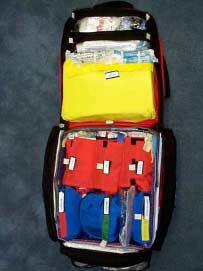
NASA MEDICAL KIT
INSIDE UPPER COMPARTMENT
Clear Pocket One
Interosseous
Non-Stick Dressing
Central IV catheter 14 ga x 5 1/2"Needles: 18, 20, 21ga
Mosquito Clamps Thumb Forceps Needle Holder
Lidocaine w/ epi 1%
Syringes: 3cc 25 ga 5/8 (5),
10cc (5), 30cc (2)
ACLS Drug Kit Pocket
ACLS Booklet/Drug Cards
Splints (SAM, Padded Wire Ladder, Arm Boards)
Surgical Gloves Size 7 1/2 & 8
Center IV Kits (3)
Outside of IV Container
Infuser Bag (1 in Center IV Kit)
Angiocatheters: 16, 18, 20 ga IV Tourniquet
Inside of IV Container
1000cc Lactated Ringers or Normal Saline IV Tubing Op-Site Barrier Dressing 1/2" tape
AIRWAY
Laryngoscope Pouch Airway/Surgical Pouch
Laryngoscope Handle Kelly Clamp
Straight Blade Disposable Scalpel
Curved Blade 16 ga Catheter
Extra Bulbs and Batteries Suture
10cc Syringe Alcohol Pads
Xylocaine Jelly Betadine Swabs
ET Tubes With Stylets Petroleum Gauze
Ambu Pouch Heimlich Valves Wet-Pruf ET Tube Tape 1" Finger Cots Bag Valve Mask Oral and Nasal Airways End Tidal CO2 Detectors

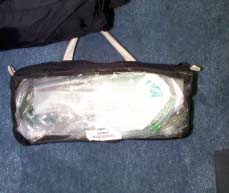
NASA MEDICAL KIT
AIRWAY POUCH
Front Upper Pocket Universal Precautions
Front Lower Pocket Dressings
Foley Kit/ 16 Fr Foley Catheter
LEFT PANEL
LOWER POCKET
RIGHT PANEL
250 ml NS (for mixing drugs)
Top Panel Diagnostic
Temperature strips
100 ml NS (2) (for mixing drugs)
500 ml Lidocaine 4mg/ml
BACK PANEL
AIRWAY ACCESSORY POUCH
(Attached to top handle)
Non Rebreather Mask
1. Pyridoxine 100mg Vials(25)
40. Magnesium 5gm vial
2. Albuterol Inhaler
3. Nitrolingual Spray
22. Phenergan 25 mg vial
42. Epinephrine 1 mg
4. Pyridoxine 100mg Vials(25)
23. Phenergan 25 mg vial
43. Epinephrine 1 mg (2)
24. Adenosine 6 mg/2ml (3)
44. Epinephrine 1 mg (2)
6. Dextrose 50% 50 ml
25. Inderal 1 mg/ml vial
45. Epinephrine 1 mg (2)
7. Sodium Bicarb 8.4% 50ml
26. Inderal 1 mg/ml vial
46. Epinephrine 1 mg
8. Mannitol 50% 50ml
27. Inderal 1 mg/ml vial
47. Epinephrine 1 mg
9. Syringe for D5 & Bicarb
28. Verapamil 5 mg vial
48. Lidocaine 100 mg
11. Naloxone 0.4 mg vials
29. Verapamil 5 mg vial
49. Lidocaine 100 mg
12. Naloxone 0.4 mg vials (2)
30. Compazine 10 ml vial
50. Lidocaine 100 mg)
13. Solumedrol 1gm/8ml
51. Atropine 1 mg (2)
14. Solumedrol 1gm/8ml
33. Benadryl 50 mg/ml
52. Atropine 1 mg (2)
15. Solumedrol 1gm/8ml
17. Procainamide 1 gm/10 cc
37. Calcium chloride 1 g38. Toradol 60 mg (3)
39. Dopamine 200 mg
Located in cooler or cool pac:
Cerebryx 500 mg/ml vial (3)Ativan 4mg/ml tubex (2)
Lidocaine 100mg bristo (2)Morphine 10 mg tubexEtomidate 40 mg bristoPavulon 10 mg vialSuccinylcholine 200 mg vial
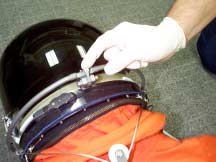
EMERGENCY SUIT REMOVAL
The procedures outlined may be done in any order, the following pictures identify the
cutting locations. The patients injuries will dictate which location should be cut first.
Heavy duty bandage scissors are all that is required for making access cuts. Astronaut
identification letter swatches are located on the helmet, flotation devices, and boots.
NOTE: The under garment has tubing sewn into the material for the purpose of
cooling the astronaut, the fluid contained within is non-toxic and is not a hazard
when cutting. If the astronaut has a biomedical experiment in the right thigh
pocket care should be taken to avoid cutting invasive lines. These lines should not
be used for fluid or medication administration.
The helmet provides excellent cervical spine immobilization, early removal will
require manual immobilization of the cervical spine until the astronaut is secured
to a long board. The outer dark visor can be raised with no special procedures.
Raising the clear visor requires
Second, squeeze the two release buttons
raising the bailer bar. First, pull out
together, this will raise the bar and visor
at the same time.
Undo the neck ring by raising and separating neck ring latch
EMERGENCY AIRWAY ACCESS
To obtain access for an emergency surgical airway, disconnect the helmet from the
neck ring assembly and make multiple radial cuts in the neck dam neoprene material.
These cuts will also relieve tension on the cervical spine for complete suit removal.
Releasing helmet from neck
Neck dam radial cuts
NECK RING REMOVAL
If the helmet and neck ring assembly or just the neck ring require immediate removal,
make a 360 degree cut below the neck ring at the location indicated. Removal will also
require cutting the anterior and posterior cloth helmet retention strap assembly.
PARACHUTE HARNESS REMOVAL
The cuts for the harness can be performed in any sequence.
In these pictures the life preserver units have been removed.
Leg Straps
Chest Strap
Unzip or cut parallel to zipper
EXTREMITIES EXPOSURE CUTTING LOCATIONS
CHEST EXPOSURE CUTTING LOCATION
SUIT EXPOSURE TO HYPERGOLS
The likelihood of significant hypergol contamination during a shuttlecontingency is extremely low
ACES will protect crewmember from hypergolic vapors but not from liquidhypergols
ACES will bleach out when exposed to liquid MMH
ACES will turn black when exposed to liquid N2O4
Vapor contamination dissipates rapidly and is not a threat to rescuers
Liquid contamination may cause eye/skin/airway irritation when it starts toevaporate
Evaporation from an ACES contaminated with liquid hypergols can beprevented for approximately 2 hours by dousing with water
SUIT EXPOSURE TO HYPERGOLS
The specimens below are test results of the outer orange nomex and inner darkblue gore-tex material used in the construction of an Advanced Crew Escape SuitACES after exposure to liquid Monomethyl Hydrazine MMH (Top) and NitrogenTetroxide N2O4 (Below).
NASA CREWMEMBER IDENTIFICATION
NASA MEDICAL CODES
• MED CODE 0 - Black
- Patient deceased or injured beyond reasonable expectation of survival
• MED CODE 1 - Red
- Condition critical - patient requires immediate care and evacuation
• MED CODE 2 - Yellow
- Condition fair to poor - need for care is not acute, but will be required beforeevacuation
• MED CODE 3 - Green
- Condition good to fair - injuries which do not require hospitalization- Some medical care may be required but not on a time critical basis
Example of transmission: "Alpha is Med Code 3"
Source: http://vandenbergfire.us/main/VFD%20Web%20Additions/New%20SOP's/Shuttle/Contingency%20Shuttle%20Landing/Plans/DDMS%20Plans/Medical%20Guide.pdf
Research and the Approval Process An agent sequentially collects information to obtain a principal's approval, such as a pharmaceutical company seeking FDA approval to introduce a new drug. To capture suchenvironments, we study strategic versions of the optimal stopping time problem …rst proposedby Wald (1945). Our ‡exible model allows us to consider di¤erent types of rules and commit-ments by the principal as well as strategic withholding of information by the agent. We shedlight on current regulation and proposed reforms of the drug approval process. The modelalso captures situations such as a …rm seeking antitrust approval to merge with a competitor,a manager proposing a project to the …rm's headquarters or an author submitting a paper toan editor.
INESC MAT - Media Arts and Technology Description of the Research Project 1 Project Proposal 1.1 Summary of the Research Programme This research program aims at achieving innovation in various scientific and technological fields within the domain of Media Arts and Technology. Expected outcomes wil range from knowledge production (high-impact scientific publications and publications in the general media) to innovative prototypes and modular technologies of use to industry as wel as end-users. Media Arts and Technology (MAT) research fuses emergent media, computer science, engineering, and electronic music and digital art research, practice, production, and theory. This relatively new field of inquiry focuses on cultural content (music, video and film, TV, radio, performing arts, etc.) and its integration with the most recent Information and Communication Technologies, including the field of Human Computer Interaction. The research areas comprise a vast number of aspects ranging from multimedia processing and analysis, new media formats, content creation, searching, integration, adaptation, diffusion and presentation. The application domains of MAT range from improvements in conventional areas such as computer graphics, sound and music computing and artificial intel igence through enablers of new media industries up to new development of health therapies, education, fashion, and tourism, for example.








